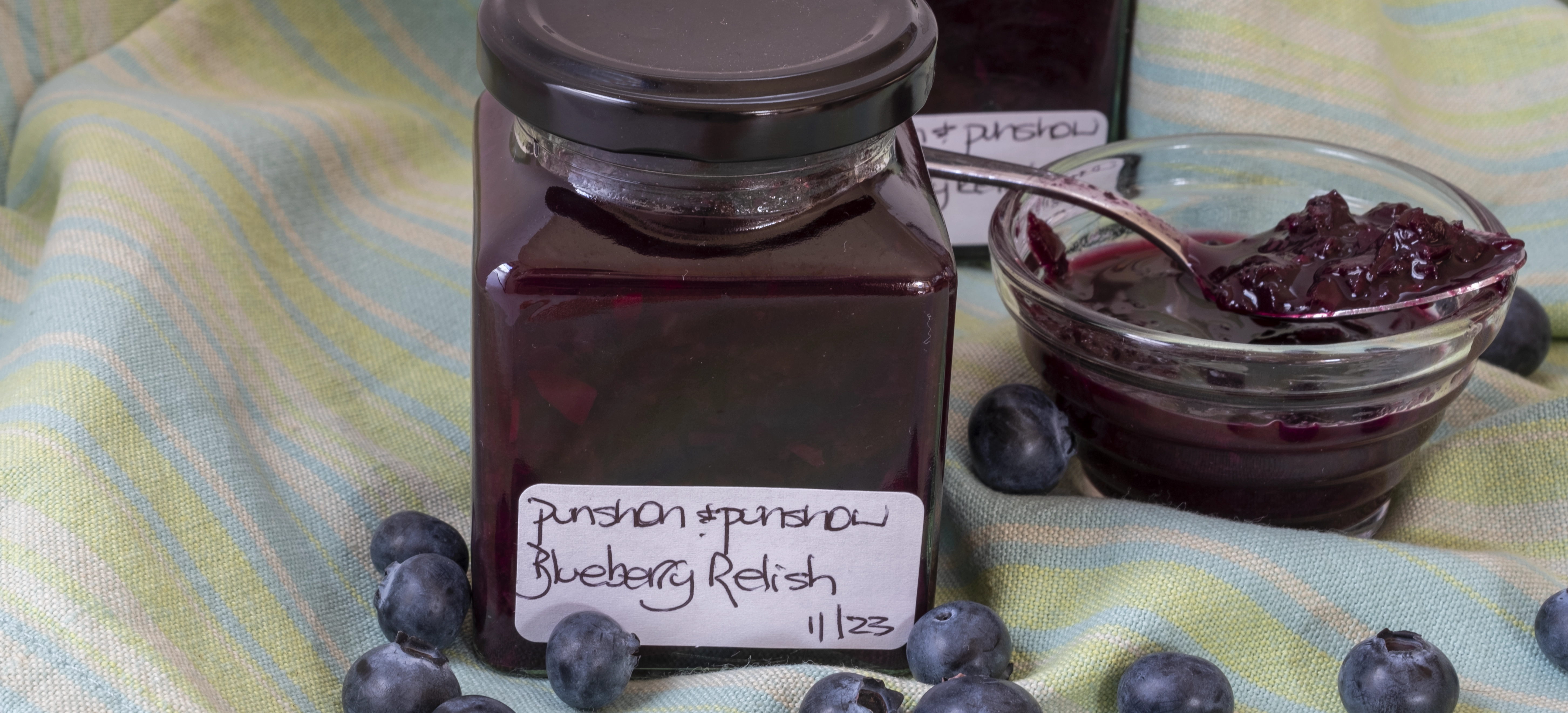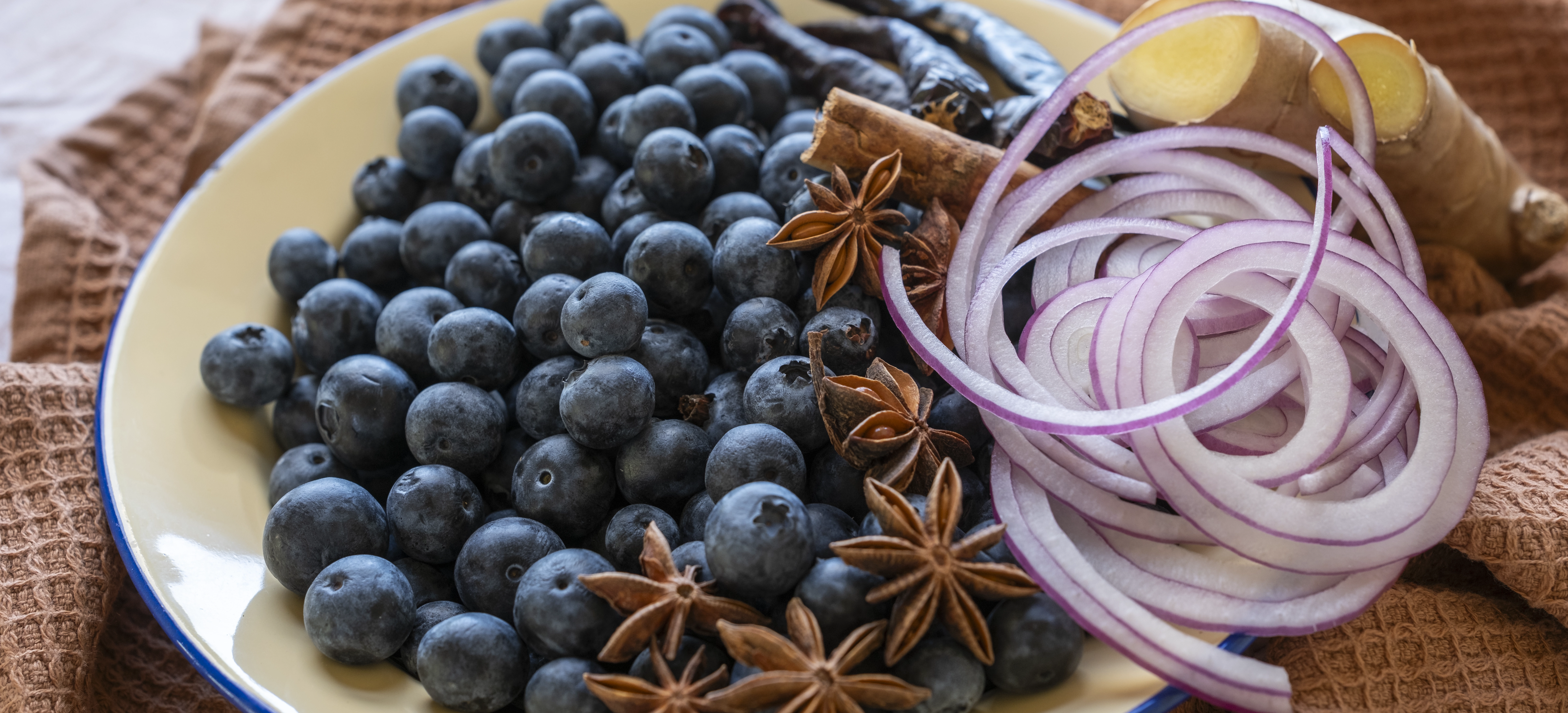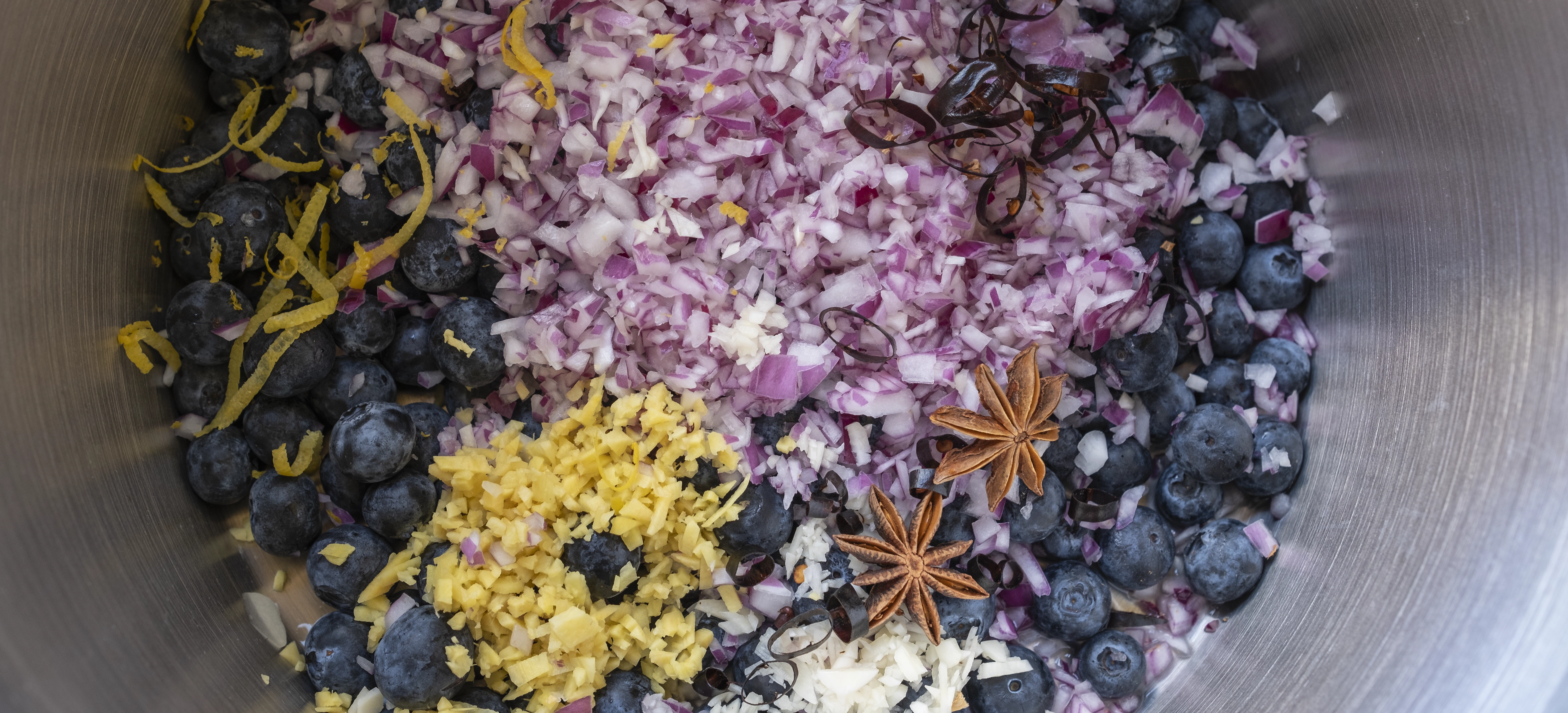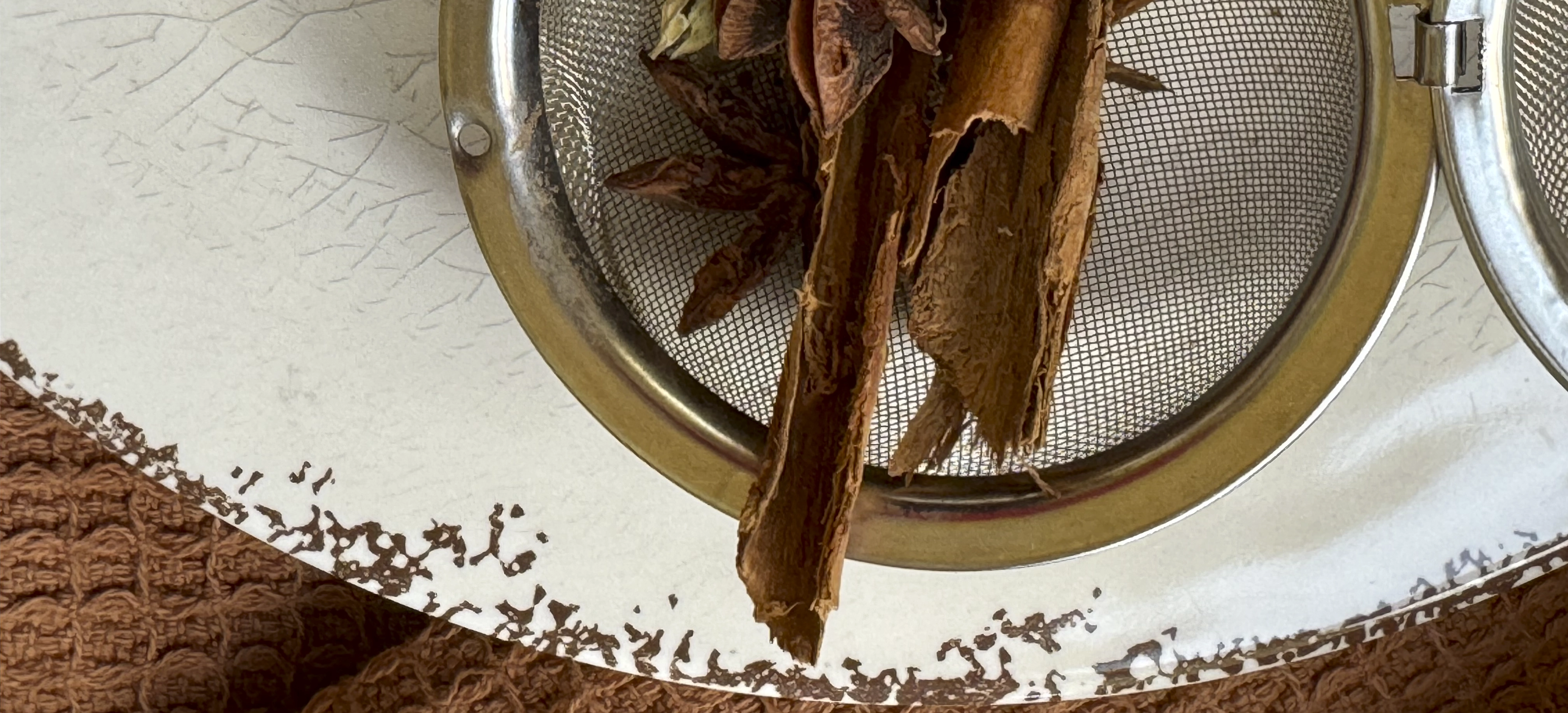Blueberry Relish
- Pickles, Chutney, Relish & Sauces

When the season is nigh, make the most of this delightful fruit and make a batch of blueberry chutney. Star anise, cinnamon and cardamon seeds provides a touch of elegance and intrigue. This will match perfectly with duck, pork, turkey and chicken as well as a great accompaniment to soft cheese. You won’t find blueberry chutney on the supermarket shelves, so make plenty, dress the jar up with bows, ribbon, and material and present proudly as a culinary gift.
- Preparation Time:
- 30 minutes
- Cooking Time:
- 40 minutes
- Quantity:
- 4 x300 ml jars
PREPARATION
Warm dry sterilised sealable glass jars and non-corrosive lids

INGREDIENTS
- 500g
- Blueberries, fresh
- 1
- Red onion, medium
- 2
- Garlic cloves
- 2 cm
- Ginger, fresh
- 1
- Lime, zest and juice
- 75g
- White sugar
- 60 ml
- Apple cider vinegar
- 60 ml
- Balsamic vinegar
- 1/2
- Cinnamon stick
- 2
- Star Anise

METHOD
Wash the blueberries and remove any bruised or damaged fruit. Dry gently with paper towel or on a fresh clean tea towel. Peel and finely chop the onion, fresh garlic and ginger. Finely dice the chilli, including or excluding the seeds, depending on how hot you want the relish to be. Use a micro plane or fine grater to remove the zest from the lime before juicing it. Remove and discard the pips.
Place the cardamom pods in a mortar and pestle and crush gently. Place the cinnamon stick, star anise and crushed cardamom pods in a large tea strainer/diffuser or make a spice bag. Refer to the Notes Section below: To Make a Spice Bag. Large tea infusers can be purchased in specialty cooking stores.
In a preserving pan or heavy bottom stainless steel pan, place the prepared blueberries, onions, chopped ginger, garlic and chilli, sugar, vinegars and the lime zest and juice.
Over gentle heat, stir until the sugar has completely dissolved. Then using a potato masher, slightly crush the blueberries.
Add the spice bag or diffuser and simmer gently with the lid on for approximately 40 minutes or until the blueberries and onion are cooked, the mixture is thick and there is no excess liquid in the pan. Stir occasionally while simmering and then more frequently towards the end as the relish thickens. If there is too much liquid, remove the lid and simmer until the mixture takes on a relish consistency.
Remove from the heat and allow it to cool slightly.
Using a funnel, pour into warm dry sterilised screw cap sealable jars. Fill to approximately 2.5cm (1inch) from the top and seal while hot or use your preferred method.
Label and store in a cool dark place in the kitchen or pantry.
Allow the relish to mature for at least 2 weeks before eating.
NOTES
 Choose clean ripe fruit. Do not use overripe, bruised or damaged fruit and never use mouldy fruit as this will produce a poor-quality relish.
Choose clean ripe fruit. Do not use overripe, bruised or damaged fruit and never use mouldy fruit as this will produce a poor-quality relish.- Select good quality jars with non-reactive lids as the vinegar solution can cause the lids to rust over time. Good quality jars should always be used in preserving, particularly when they are processed in a hot water bath. Thin jars often cannot withstand the temperatures and may crack either in the bath or on and or after removal. Avoid the disappointment and invest in some good jars from a homewares or preserves outlet.
- The cooking time is an approximation only. Cooking time will depend upon, the size of preserving pan, degree of fruit ripeness and the degree of heat when cooking.
- To test the chutney is cooked to the right consistency, spoon a little of the mixture on to a plate. It should hold its shape.
- Towards the end of the cooking process, it may be necessary to stir regularly. It is important that the fruit does not stick to the bottom of the pan and burn. Your chutney will be tainted with a burnt flavour which is not very pleasant.
- Always store relish in a cool dark place. A warm area can cause it to ferment, and bright sunlight can affect the colour.
- Chutneys and relishes are best left to mature for 2 months in a cool dark place before eating. Traditionally they were stored in the cellar or pantry.
- To Make a Spice Bag
- To make the cloth spice bag, drape a square of muslin or calico over a basin. Place the spices and/or herbs outlined in the recipe mixture into the cloth
- Gather up the corners and make a bag by tying it up with kitchen string approximately 2 cm above the fruit. Always allow room between the tie point and spice mixture so the water can bubble through the bag easily. This helps to extract as much flavour as possible from the contents.
- Discard the spices, unless otherwise specified in the recipe once the bag has been removed from the preserving pan. Wash, dry and keep the cloth for the next batch.
- My tea towel draw has a range of different sized cloths that are on hand for my preserving sessions.
- Type of sugar and vinegar
- The type and colour of the sugar and vinegar used will affect the final colour and flavour of the chutney. Malt vinegar and brown sugar will produce very dark brownish chutney with a more earthy/molasses background flavour. White wine or apple cider and white sugar will allow the fresh fruit flavour of the blueberry to come through. This is a matter of personal choice.
- I generally use a combination of white sugar with apple cider vinegar as the basis of my chutneys and relishes. In this recipe I have added some balsamic vinegar to provide a more intense flavour base to enrich the fruity blueberry flavour. If you do not have any available use additional cider vinegar.
- Take care to only use vinegar which has a 5% minimum acetic acid content. The acetic acid content acts as the principal preservative, and any lower quantity will compromise the safety of your preserves. Commercially available vinegar is 5%, however most homemade vinegars do not achieve this level
- Cinnamon (Cinnamon verum)
- Contains sweet and aromatic flavours. It doesn’t taste sweet, rather it enhances the perception of sweetness in other ingredients. It can draw out sweet notes in savory dishes. Cinnamaldehyde is the main flavour compound and is sensed by the temperature sensors on the tongue, giving cinnamon a warming quality.
- Cinnamon sticks keep their flavours for up to a year. Keep in an airtight containers and store in a cool dark place in the pantry or kitchen. The lighter brown, thinner more fragile sticks are higher quality.
- Inner layers of bark are dried in the sun and rolled together by hand to make “quills.”
- Cinnamon and cassis are distinctly different in appearance and flavours profile.
- Use cinnamon quills in this recipe.
- Cardamom (Elettaria cardamomum)
- Also known as small cardamom, green cardamom, true cardamom and the queen of spices
- Parts used – whole pods (fruits) contain the seeds. Fruits contain 15-20 seeds that ripen from white to reddish brown or black. Good -quality seeds should be black and slightly sticky. Avoid using seeds that are pale and dry. Pods are papery, normally yellowish green. White pods have been bleached for aesthetic reasons and have a weakened aroma. Pods are graded by width with the fattest ones containing the most seeds.
- Highly aromatic spice is sweet, minty, and penetrating – suitable for both sweet and savory dishes.
- More versatile than black cardamon which lacks sweetness and has smoky flavour which may not work well in desserts. Whole pods give a subtle flavour and are most suited to slow cooking. But always crush them before use. For a fresher, more intense flavour and for quick-cooking dishes remove the seeds and grind them slightly.
- Cardamom is native to southern India and Sri Lanka; Guatemala is now one of the world’s largest producers.
- Ginger (Zingiber officinale)
- Tropical ginger perennial in the ginger family. Its tall shoots develop from underground stems – rhizomes.
- Ginger has a hot-spice, citrusy woody taste. It’s available as a fresh underground stem, a rhizome, or as a finely ground powder. The dried version is used in baking and spice blends whereas fresh ginger is used widely in Asian cuisine.
- Do not substitute dried ginger for fresh as the dried form has a stronger and more aromatic flavour.
- When purchasing fresh ginger, avoid older rhizomes with signs of shrivelling as the plant is drying out and the flesh can be fibrous.
- Star Anise (Illicium verum)
- Cultivated for more than 3,000 years for culinary and medicinal use in its native China and Vietnam. It is also cultivated in India, Laos, the Philippines, Japan and Taiwan. The fruits are dried until they are wooden and hard, and the pods have split open to expose the seeds. The seeds and woody carpels are also ground to make a powder, unfortunately the flavour does not stay fresh very long. The trees are long lived and can bear fruit for 100 years or more.
